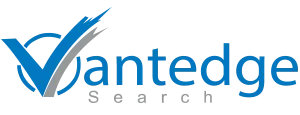- Cover Story: Halfway Through, All In – The Executive Priorities Shaping 2025
- Expert Corner: Insights from Industry Leaders on Precision, Strategic Agility, and Purpose-Driven Growth
- Executive Movements: Transitions and Pivots
- Career Development Advice: From Stability to Strategic Edge – Executive Career Moves That Matter in H2 2025
View From The Top

Rajesh Khanna,
President,
Vantedge Search
As we cross the halfway mark of 2025, one truth stands out: executive leadership is undergoing its most rapid recalibration in over a decade. From AI-driven strategy to resilience in volatility, today’s leaders are navigating a business climate that’s no longer defined by certainty or precedent—but by adaptability and conviction. This edition of The Vantedge Point surfaces what we’re hearing across boardrooms, investor calls, and leadership searches: that the new CEO brief is as much about operational fluency and stakeholder trust as it is about vision. The C-suite is being redrawn not just in structure, but in spirit.
We’re seeing a clear pattern in the leaders who are not just keeping pace but setting it. They are fluent in tech yet grounded in values. They pair discipline with innovation, and they architect work models that prioritize human well-being as much as performance. The profiles we now assess—and place—are those who’ve moved from tactical execution to systems-level leadership. In this issue, from DeepL’s precision AI leadership to Jean Rogers’ sustainability stewardship at Pegasus, the throughline is clear: impact is no longer optional. I invite you to reflect on how your own leadership narrative is evolving—and how we, at Vantedge, can help shape what’s next.
Halfway Through, All In – The Executive Priorities Shaping 2025

Mid-Year Reflections on a Shifting Executive Landscape
As we reach the midpoint of 2025, it’s clear this is no ordinary year for executive leadership. The terrain beneath the C-suite is shifting rapidly. Technology has moved from the background to the boardroom. Economic models are being recalibrated. And leadership itself is being redefined—not just by profit, but by purpose, resilience, and responsiveness.
In working closely with global enterprises this year, we’ve seen first-hand how the leadership brief is evolving. From discussions across forums, high stakes interactions to investor calls, six key themes have emerged as central to C-suite conversations. These are not abstract ideas, but very real challenges and opportunities occupying the minds of today’s top executives. And they provide a sharp lens into what organizations will demand from their leaders in the months ahead.
- AI as Strategic Muscle
By mid-2025, artificial intelligence is firmly entrenched in the executive playbook—not as a curiosity, but as a competitive edge. The narrative has moved well beyond adoption. AI agents are now actively managing tasks from inventory workflows to real-time forecasting. In fact, 25% of companies implementing generative AI have scaled into full AI-agent deployment this year.
The conversation has matured, too. It’s no longer about “should we use AI?” but “how do we lead with it?” Executives today are expected to integrate AI deeply into strategy while remaining vigilant about ethics, trust, and transparency. The modern leader must be both technically fluent and human-centered—capable of driving digital acceleration without losing sight of people and purpose.
- Cost Discipline Without Compromising Direction
Mid-2025 has placed cost efficiency under a sharp spotlight. In response, organizations are flattening hierarchies and tightening operational models. But with these shifts come new tensions—most notably, the strain on leadership bandwidth. Many senior leaders are now shouldering broader portfolios, often with leaner teams.
What distinguishes effective leaders today is their ability to balance discipline with vision. Efficiency isn’t simply about trimming fat—it’s about investing smartly in automation, upskilling, and targeted innovation. It requires clarity of purpose and the ability to see around corners, ensuring that cost control doesn’t come at the expense of future readiness.
- Steering Through Volatility
The first half of this year has underscored how little remains certain. Geopolitical disruptions, evolving regulations, and currency shifts have created a fluid operating environment. For executives, the challenge lies not only in managing risk—but in building agility into the foundation of their organizations.
What we see emerging mid-2025 is a premium on resilience: leaders who can turn ambiguity into action. They design for adaptability, not permanence. They know when to pivot and when to hold steady. And perhaps most critically, they bring calm, decisive leadership when markets—and morale—waver.
- Precision in Personalization
Customer expectations have become sharply focused in 2025, and mid-year trends only reinforce this. The demand now is for precision-level personalization—experiences finely tuned to individual behavior, preference, and context.

This isn’t a job for marketing departments alone. At the C-suite level, it demands strategic orchestration: connecting AI, analytics, customer service, and brand. The best leaders are breaking down internal silos to create end-to-end personalization journeys that feel human, relevant, and continuous—not intrusive or transactional.
- Sustainability as Core Strategy
If there was any doubt that ESG would move from the margins to the mainstream, mid-2025 has erased it. Environmental and social accountability is now table stakes—driven not just by regulation, but by stakeholder expectation. Investors want to see integrated sustainability, not parallel reporting.
The conversation now centers on execution: how to embed ESG deeply into product strategy, capital allocation, and culture. Leaders who excel in this space don’t treat it as a compliance box—they see it as an innovation engine. They’re aligning purpose with performance, translating values into value creation.
- Designing the New Work Equation
Hybrid work models remain in flux as organizations search for the right equilibrium between flexibility, culture, and productivity. At mid-year, we see increased experimentation with digital collaboration tools and physical spaces designed for purpose—not presence.
But just as important is the growing emphasis on well-being. Executive teams are acutely aware that engagement and retention hinge on mental health, inclusivity, and sustainable pace. The new leadership imperative is to architect work environments that enable—not exhaust—the workforce. It’s about optimizing not just for tasks, but for trust and talent longevity.
The Second Half Awaits
As the calendar turns to Q3, one thing is clear: the pace of change isn’t slowing. If anything, it’s accelerating. What we’ve seen so far in 2025 is a redefinition of executive leadership—one that prizes agility over rigidity, clarity over control, and long-term thinking over short-term optics.
The C-suite of the future is already taking shape. Its leaders reimagining, not just reacting. And in that reimagination lies both challenge and tremendous promise.
For more information on Vantedge Search, please contact us. We look forward to hearing from you.
Expert's Corner –
What's Trending?
Insights from Industry Leaders on Precision, Strategic Agility, and Purpose-Driven Growth
Leadership is being redefined from the ground up by complexity, by speed, and by expectations that extend well beyond the balance sheet. In this issue, we share insights from three leaders at the helm of breakthrough transformation on what it takes to scale, adapt, and lead with precision and impact.

Jarek Kutylowski, CEO, DeepL
The rise of specialized AI platforms like DeepL underscores a clear shift in executive thinking: strategic advantage lies not in adopting AI broadly, but in deploying it with precision. As Jarek Kutylowski, CEO of DeepL, explains, organizations are no longer content with generic language models. Business-critical functions—especially those involving global communication—demand AI tools that are highly accurate, secure, and context-aware. DeepL’s rapid evolution, including its 2024 launch of DeepL Voice for real-time multilingual meetings, reflects how top-tier companies are integrating Language AI into the heart of their operations to eliminate friction, improve cultural fluency, and scale internationally with confidence.
Executives increasingly recognize that personalization isn’t just about marketing—it’s about clarity, nuance, and reputation. Kutylowski points out that a mistranslation in legal or customer communications can result in significant brand or compliance risks. That’s why DeepL’s differentiation—highly specialized language models, built-in glossary tools, and enterprise-grade privacy controls—has become a strategic asset for leaders facing complex, multilingual demands. As the $67.9 billion language industry accelerates toward its $95.3 billion projection by 2028, executives who understand the intersection of AI, communication, and trust will be best positioned to lead.
Lisa Su, CEO, AMD
Speaking after AMD’s fiscal first-quarter results, CEO Lisa Su emphasized the importance of balancing national security with global technology adoption, noting that such adoption supports both U.S. jobs and the economy. While acknowledging that chip restrictions are a challenge, she maintained that broader AI deployment remains a “really great position” for the U.S. to be in, pointing to both strategic value and economic impact.
Despite a projected $1.5 billion impact from export controls in 2025, Su underscored AMD’s resilience and adaptability, referencing recent tariff turbulence and the company’s efforts to shift manufacturing to the U.S. She noted that AMD experienced “robust” sales in April and described the broader semiconductor supply chain as one that has taught the company to become highly agile. Su’s remarks reflect a pragmatic leadership approach: navigating regulatory uncertainty while continuing to invest in growth and operational flexibility.

Jean Rogers, Senior Operating Advisor, Pegasus Capital Advisors
Jean Rogers’s appointment to Pegasus Capital Advisors marks a significant inflection point for sustainable investment leadership in mid-2025. As the founder of the Sustainability Accounting Standards Board and a former Blackstone executive who helped deploy over $12 billion into climate and energy transition solutions, Rogers brings decades of experience in aligning financial performance with climate and social outcomes. At Pegasus, she is now focused on scaling investments in renewable energy, water systems, sustainable agriculture, and nature-based projects—particularly across emerging markets where impact and growth converge. Her approach emphasizes Article 9-aligned governance and deep integration of sustainability into every stage of investment, from due diligence to reporting.
What makes Jean Rogers’s appointment more than a leadership transition is how closely her philosophy mirrors Pegasus’s own. Both prioritize measurable impact—not as branding, but as strategy. Rogers brings decades of experience turning sustainability into institutional standards, and Pegasus offers a platform where those principles are embedded into real-world investments across agriculture, energy, and water systems in emerging markets. For Rogers, Pegasus’s refusal to force projects into rigid fund models resonates deeply; for Pegasus, her stewardship of sustainable frameworks and experience steering billions into climate-linked capital gives their next phase of growth sharpened purpose. It’s a practical match—between a firm with deep, field-tested experience in sustainable development and a leader who has spent her career building the systems to scale it with integrity.
Executive Movements:
Leadership Transitions & Strategic Pivots
CEO Movements
Somnum Bene Holdings, the parent company of cpap.com, has named Joe Megibow as CEO, succeeding co-founder Johnny Goodman. Backed by Cathay Capital, the move aims to accelerate growth in the sleep health space. Megibow, former CEO of Casper Sleep and Purple Innovation, brings extensive experience in scaling consumer brands and driving digital innovation.
Swiss Re Corporate Solutions has appointed Adrian Hall as CEO for its United States branch, marking a strategic move to strengthen customer focus and operational agility. Hall, who previously led the firm’s Canada operations and EMEA wholesale channels, brings over 30 years of industry experience
BioPorto A/S has named Carsten Buhl as its next CEO, effective 1 September 2025, as part of its planned leadership transition. Buhl brings over 25 years of MedTech experience, including senior roles at WSAudiology and GN Store Nord. He will lead the upcoming U.S. launch of ProNephro AKI (NGAL)™ and oversee FDA submissions for adult use. Outgoing CEO Peter Mørch Eriksen will support a seamless transition during the onboarding period.
Everon has appointed industry veteran Don Young as Chief Executive Officer, succeeding Tim Whall, who returns to his role as Executive Chairman. Young brings nearly four decades of experience in the security and life safety sector, including leadership roles at ADT, STANLEY Security, and Protection 1.
Renesas Electronics has named Zaher Baidas as Senior Vice President and General Manager of Power, effective July 1, 2025. Baidas, currently VP of the Timing Division, will oversee the company’s power management and discrete portfolios, reporting directly to CEO Hidetoshi Shibata. He succeeds Chris Allexandre, who exits after significantly advancing Renesas’ power strategy and operational performance.
Christina Clohecy has been appointed Chief Executive Officer of Network Solutions Group, a division of Newfold Digital. Previously CFO and COO of Newfold, Christina brings over 25 years of tech leadership experience and has led significant operational transformation. She will now oversee flagship brands including Web.com, Domain.com, and Markmonitor, with a focus on strategic growth and customer-centric innovation.
Stellantis has named Antonio Filosa as its new Chief Executive Officer, effective 23 June 2025. A 25-year company veteran with deep operational experience across the Americas, Filosa succeeds following a global leadership search. Known for driving growth at FIAT and Jeep® in key international markets, he now leads the automotive giant amid a pivotal industry shift toward electrification and innovation.
Instacart has named Chief Business Officer Chris Rogers as its next CEO, effective August 15, 2025. Rogers, who joined the company in 2019 and became CBO in 2022, succeeds Fidji Simo, who will remain board chair while stepping into a senior role at OpenAI. The leadership change follows strong company performance and comes alongside an increased share buyback plan, now totaling $1 billion.
Visa has named Antony Cahill as Regional President and CEO of Visa Europe, succeeding Charlotte Hogg, who departs after eight years of leadership. Cahill, currently President of Value-Added Services, previously served as Deputy CEO for Visa Europe and brings deep regional expertise.
BRP Inc. has announced that longtime President and CEO José Boisjoli will retire by the end of the fiscal year after 22 years at the helm. Boisjoli led BRP’s evolution from a Bombardier spin-off to a global powersports leader, tripling revenue and expanding its product lines across all seasons. A search for his successor is underway, with Boisjoli remaining in place to ensure a smooth transition.
FedEx Corp. has appointed John A. Smith as CEO and R. Brad Martin as Chairman of the soon-to-be-independent FedEx Freight, effective upon the division’s spin-off expected by June 2026. Smith, a 30-year industry veteran, previously led FedEx Freight through strong growth. Martin, Vice Chair of FedEx Corp.’s board, oversaw the strategic review behind the separation and will continue serving on both boards.
CFO Movements
- BILL Holdings Inc. appoints Rohini Jain as CFO; John Rettig transitions to President & COO effective July 7, 2025.
- Five Below, Inc. appoints Kenneth R. Bull interim CFO, succeeding Kristy Chipman.
- Blink Charging Co. appoints Michael Bercovich CFO (effective June 23, 2025).
- Grant Thornton appoints Rick Surett as CFO, succeeding longtime leader Muhammad Bhayat
- HelloFresh SE announces the departure of Chief Financial Officer Christian Gärtner
- Pluralsight appoints Mathew Ellis as Chief Financial Officer.
CIO/CTO Movements
- Vertiv appoints Mike Giresi as Global CIO to drive AI, cybersecurity, and digital innovation strategy.
- Genesys appoints Trevor Schulze as CIO to lead global IT and accelerate AI-driven customer experience innovation.
- BCB Group appoints Armin Ranjbar as CTO to lead AI integration and drive blockchain-powered innovation.
- The Home Depot appoints Angie Brown as EVP and CIO to lead enterprise-wide technology and digital strategy.
- Agilent appoints August Specht as Chief Technology Officer to drive innovation and next-gen technology strategy.
- Lincoln Financial appoints Tom Anfuso as Chief Technology Officer.
Insights: Inferring the why
This month’s CEO movements are more than routine successions—they reveal how the demands on executive leadership are shifting in real time. Beneath each appointment lies a strategic signal. Here’s what the transitions indicate about the evolving CEO brief across industries:
- Operational Depth Is Now a Strategic Imperative
Organizations are appointing leaders with hands-on experience in managing complexity—those who’ve run P&Ls, restructured functions, or led integrations. This shift reflects investor appetite for operational credibility over abstract vision, especially in capital-tight environments where EBITDA impact is non-negotiable. - Industry Familiarity Is No Longer Optional
Boards are favoring executives with long-tenured, domain-specific experience. These are not just safe bets—they’re fast starters who understand regulatory nuance, ecosystem dynamics, and customer cycles. In sectors where pace and precision matter, on-the-ground fluency is trumping generalist agility. - Transformation Without Growth Is Insufficient
New CEOs are expected to modernize core systems and drive topline expansion—simultaneously. From AI deployment to customer journey overhauls, the agenda reflects dual expectations: show scale potential while rewiring for resilience. Leaders are being hired to rebuild the engine while flying the plane. - Planned Transitions Reflect Governance Maturity
Several appointments stem from pre-announced retirements, internal successions, or strategic spin-offs. This points to stronger succession pipelines and signals boardroom confidence in continuity—especially valuable in industries where sudden disruption could rattle investor or regulatory trust. - Structural Realignment Is Recasting Leadership Scopes
Movements tied to spin-outs, regional decentralization, or unit-specific focus show a broader trend: companies are re-architecting leadership roles to mirror where risk, growth, or stakeholder scrutiny is most concentrated. CEOs aren’t just taking over—they’re being embedded where the business model is actively evolving.
The throughline? Today’s CEO is less a figurehead and more a systems-level architect—expected to combine operational muscle, domain fluency, and transformative drive. These shifts reflect not just a change in personnel, but a recalibration of what the CEO job actually demands.
From Stability to Strategic Edge: Executive Career Moves That Matter in H2 2025
With the second half of 2025 around the corner, executive roles are being redefined by more than strategy decks and boardroom targets. The shift is structural — demanding deeper fluency in emerging tech, sharper instincts in risk environments, and measurable alignment with sustainability and workforce expectations. Career advancement in this is about relevance over visibility. Here are five grounded, forward-looking moves for executives serious about staying ahead:
- Shadow Your Tech Teams — Quarterly
If you’re not directly responsible for AI implementation, make it your business to know who is. Spend structured time each quarter with your data science, engineering, or digital product teams—not to check in, but to learn. Ask how generative AI or real-time analytics are actually being deployed. The goal is not technical mastery but informed decision-making. The best executives in H2 2025 can speak fluently about what their tools do—and what they don’t.
- Redesign One Process for Cost + Capacity
Choose one area under your remit—be it procurement, reporting, or customer support—and lead a redesign that simultaneously cuts cost and improves team bandwidth. Don’t delegate the audit. Run it. This is the kind of targeted, proof-of-capability initiative boards are watching for in leaner operating models. It demonstrates not just efficiency, but scalable thinking.
- Run a Risk Simulation for Your Function
In a volatile regulatory and geopolitical environment, you can’t afford to outsource resilience planning. Create a structured, cross-functional risk simulation this quarter—focused on a disruption relevant to your business (e.g., export restrictions, supply shocks, platform bans). Simulate impact, mitigation, and response time. Document the results. Executives who do this are not just operationally prepared—they’re promotable.
- Pilot a Cross-Disciplinary Initiative on Customer Experience
Precision personalization is not a marketing KPI—it’s a leadership capability. Collaborate with peers across data, UX, and customer operations to design or refine a pilot that improves the end-to-end experience for one core customer segment. Whether it’s multilingual onboarding, AI-powered service workflows, or feedback loops, take ownership of one measurable outcome. Customers—and leadership teams—remember what you fix, not just what you forecast.
- Take the Lead on One ESG Metric with Financial Impact
Choose one ESG dimension—such as supply chain emissions, workforce well-being, or governance transparency—and map its connection to business performance. Propose or refine a metric that ties this directly to cost, risk, or revenue (e.g., absenteeism vs. retention costs, audit-ready traceability in procurement). Present it to your CFO. The executives who will be invited to lead next are the ones turning values into levers.
No Plateau, Just Pivot
H2 2025 will not reward passive experience or inherited scope. It will reward those who recalibrate—who understand that leadership today is not about defending a seat at the table but redesigning the table itself. The question for every executive now is simple: what have you personally moved, built, or safeguarded that will still matter in Q1 2026?


